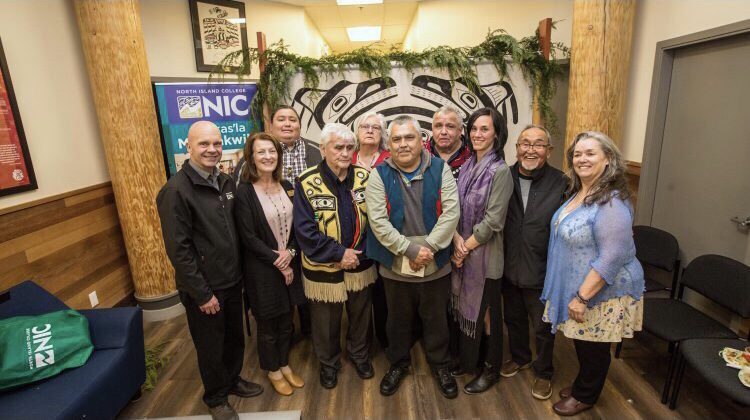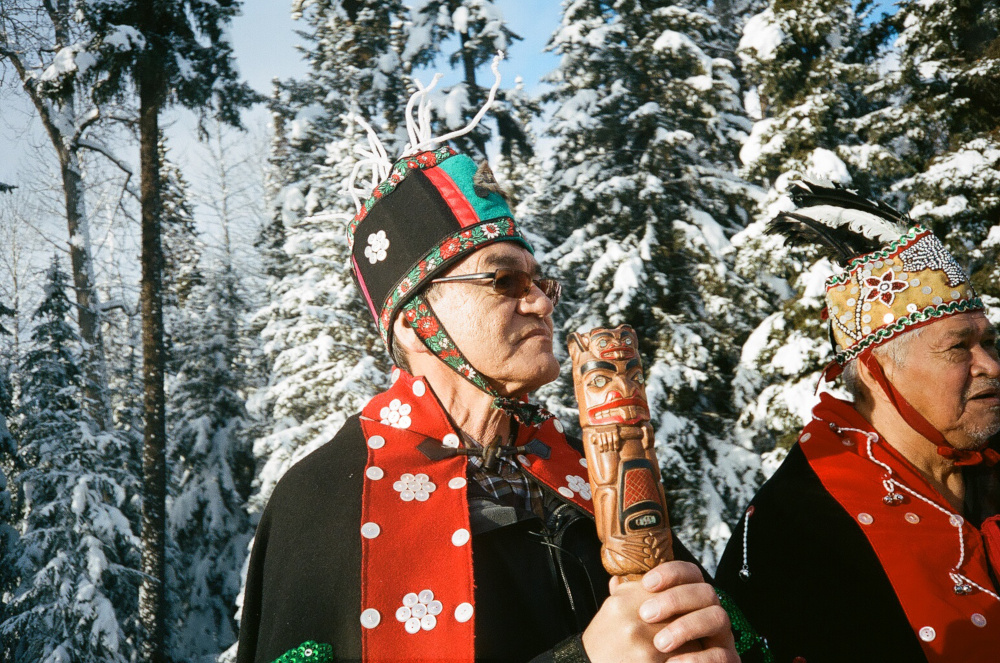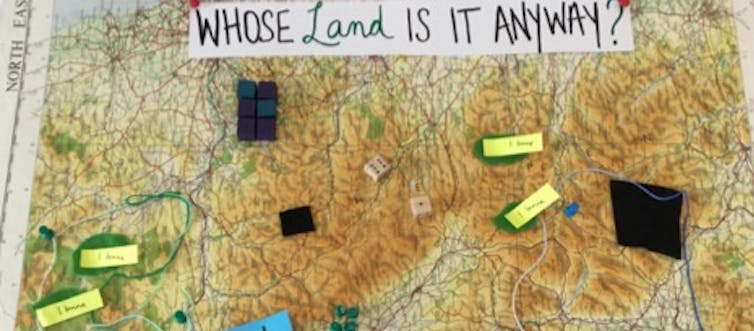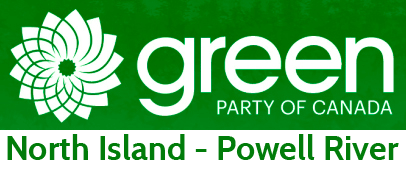Must Reads from Last Week
Around the riding
Comox Valley: March for Climate

DATE/TIME: May 3, 2019, 1-4 pm
LOCATION: Courtenay City Hall
“On May 3rd (time TBA), In front of Courtenay City Hall we will protest the climate crisis facing our planet. Join us on our march to bring attention to the urgency of the situation to city hall, local financial institutions and the office of Ronna Rae Leonard and Gord Johns. Help strike for climate!”
(Hosted by Youth Environmental Action)
Forests + Climate Change: Town hall Meeting, Community Dialogue
DATE/TIME: May 10, 2019; 6:30-9 pm
LOCATION: Native Sons Hall, Lower Level
Please join Sierra Club BC, the Wilderness Committee and local Comox Valley activists for an evening of presentations on the climate crisis, the state of old-growth and second-growth forests on Vancouver Island and how these two relate to each other, followed by group discussions about how we can build a just and sustainable future in the Valley and across the Island!
Climate change and decades of mismanagement of forests in and around the Comox Valley are and will continue to be major challenges into the future. How can we build interest in meaningful change on both these interconnected issues simultaneously, and with the speed required? How can we do this in a way that benefits everyone and respects the sovereignty of the First Nations in whose territories we live? These are the questions we want to dive into.
All perspectives are welcome, and we want to issue a challenge that everyone interested taking part in this conversation: try to bring one other person who may not otherwise attend an event like this! The Wilderness Committee and Sierra Club BC will be on the road during the first two weeks of May, documenting old-growth forests and logging, meeting with First Nations, local governments and communities up and down Vancouver Island.
Comox Valley’s first electric vehicle event
DATE/TIME: Saturday, May 18, 2019, 10 am to 4 pm
LOCATION: Comox Valley Sports Centre parking lot
Come check out everything you need to know about electric transportation in the Comox Valley! Test drive an electric car or e-bike, talk to EV owners, see a Tesla up close and find out about incentives for purchasing electric vehicles. Sign-ups for test drives will be first come, first serve. (Hosted by Watershed Sentinel)
And…New law makes it easier for British Columbians to buy electric cars
Kus-Kus-Sum
From a tweet by Ronna-Rae Leonard, Courtenay-Comox MLA: “Shivers of delight to share the news today that our government is providing $1m to help purchase Kus-Kus-sum, an old sawmill site on K’omoks Estuary, originally a tree burial site of K’omoks First Nation. Supporting conservation, climate change adaptation & reconciliation.”
Courtenay Council pushing single-use plastic ban
“[M]ayor Bob Wells stated that the goal was to have the bylaw in place and enacted by July 1st of this year, with enforcement starting next year.” Read more. Also the Comox Valley Regional District is moving in the same direction.
Reconciliation: Brooklyn student a reconciliation ambassador

Dani Lewis will attend a national reconciliation leadership workshop for her artwork. Photo submitted
“Imagine a Canada is a great way to bring attention to reconciliation,” Lewis explained. “One of my mom’s friends told me about the competition and I feel that it was important because I’ve learned what reconciliation is and I feel it was important because my Dënesuliné language and culture has been negatively affected … (it is) becoming a dead language. Imagine a Canada is a competition through the National Centre for Truth and Reconciliation at the University of Manitoba. It asked young people across the country from kindergarten to grade 12 to demonstrate how they can be a leader in reconciliation and to make the future of Canada a more respectful place.” Read more.
New name gifted for North Island College Port Hardy campus

April 25_2019_PORT HARDY BC: NIC renaming ceremony took place at the campus with chiefs, elders, drummers to welcome the new name Mixalakwila. Speeches by NIC President John Bowman, Board of Governor’s Jane Murphy and Port Hardy recognized guests. Photo by Kim Stallknecht
“A gift has been given by community elders on northern Vancouver Island to North Island College. The college has announced that their Port Hardy/Mount Waddington regional campus in Port Hardy will now be known as Mix̱alakwila, meaning “maker of what’s been dreamt about.” The renaming is the result of a series of gatherings between elders from different communities, and Chief George Hunt. “The conversations included rich discussions of what NIC and access to education means to First Nations communities and Indigenous learners,” read the college’s announcement.” Read more.
Parallels between SNC Lavalin and Mack Laing controversies
Interesting letter to the editor in the Comox Valley Record on April 18.
Provincially
BC Greens convention
DATES: June 7-9, 2019
LOCATION: Anvil Centre, 777 Columbia St, New Westminster
Google map and directions
Autonomy/Reconciliation: Land use issues on BC First Nations reserves
On April 23, the Green Party of Canada Shadow Cabinet presentation was on reconciliation and First Nations. One of the things talked about briefly was First Nations law versus Canadian law. Within that context, here are two articles talking about land use on reserves. The first item is from October 2018. It talks about the K’omoks First Nation in Courtenay having to go to court to enforce its own land code to try and evict irresponsible tenants. “Since 1999, when the First Nations Land Management Act was enacted, First Nations have had the authority to write their own laws for managing land and resources. But as K’omoks discovered, having the power to create laws doesn’t necessarily mean you have the power to enforce them.” So the K’omoks had a legal right to create their own land code but the RCMP wouldn’t enforce it because they didn’t recognize it. The K’omoks were forced to take the matter to court to have their authority to have their law enforced recognized.
Fast forward to April 21, 2019, and the Cowichan Tribes are voting on creating their own land use codes. They will vote in September on instituting their own land use by-laws and rejecting the land use provisions codified under the Indian Act. According to this article, 12 First Nations on Vancouver Island have already gone through this process.
Autonomy/Reconciliation: ‘The Wet’suwet’en Need to Lead This. That’s All There Is to It’
 Chief Na’Moks at the Gidumt’en checkpoint, December 2018. Photo by Michael Toledano.
Chief Na’Moks at the Gidumt’en checkpoint, December 2018. Photo by Michael Toledano.
One of the other topics covered in the Shadow Cabinet presentation on First Nations was UNDRIP - the United Nations Declaration on the Rights of Indigenous People. Canada used to be an objector to UNDRIP; hard to believe in one way, when we think of Justin Trudeau saying repeatedly that there’s no more important relationship to him than the relationship with First Nations peoples. The objector status was only withdrawn in 2016 by the Trudeau government. In 2016, Wet’suwet’en hereditary Chief Na’Moks addressed the United Nations and promised to return with a report on how Canada had fared in developing that most important of relationships.
On April 22, 2019, Na’Moks gave his second update to the UN.“Nothing’s really changed from the time that they accepted it,” he says about Canada’s promise to implement UNDRIP. “They’ve really not done anything.” In March, BC Premier John Horgan addressed the Wet’suwet’en at a feast on their territory. Referring to the inaction by the federal government, Horgan said, “This fall, we’ll be tabling legislation to give meaning to (Indigenous) rights that were given by the United Nations but not yet picked up in Canada or in British Columbia,” he told more than 100 people in attendance. The federal government’s not with us today and the federal government may not be with us in the future. I don’t care much about that. I know that I have a unique opportunity as the premier of British Columbia to work with you to find a path forward.” Na’Moks hopes that as the process moves forward in BC, it may inspire action at the federal level.
And, as a link to the two articles above on land use issues within BC First Nations communities, “Na’Moks also intends to speak to Article 20 of UNDRIP, two paragraphs guaranteeing Indigenous peoples the right to their own political, economic and social systems, their own means of subsistence and development, and the freedom to engage in traditional and other economic activities. The section ends: “Indigenous peoples deprived of their means of subsistence and development are entitled to just and fair redress.” Perhaps we’re coming to a tipping point where recognition of First Nations laws and reconciliation will finally move forward. Read more.
…and more on First Nation control of land: Using maps as a weapon to resist extractive industries on Indigenous territories

Whose Land is it Anyway? (crafted by Charlotte Adams, Kaitlin Kok, Melissa Castron, Tom McGurk, Mary Kate Craig, Sébastien Caquard - Aug. 2018)
While this isn’t specifically about BC, this piece follows directly from the same issue.
“There is a long history of the use of maps and cartographic techniques by countries and governments to claim ownership over Indigenous territories. But since the 1990s, Indigenous communities have been deploying mapping tactics as a mode of Indigenous resistance, resurgence and education. These tactics use historical memory and ancestral knowledge to assert territorial rights and community visioning. Indigenous communities have either led or collaborated with multiple players to launch a broad array of mapping projects as a way of reclaiming ownership on the multiple aspects of their territories. These projects range from low-tech community mapping approaches to the use of the latest online web mapping technologies.”
Women’s history: Edith Berkeley, Alfreda Needler, Mary Needler Arai
You just never know what’s going to come in an email. This is from Hakai Magazine, a BC-based (Island-based) magazine from the Hakai Institute. What follows below isn’t in the magazine itself, but was in an email from the editor. It’s a very interesting bit of Vancouver Island marine history.
“A few years ago, one of our readers Natalie Sopinka, a fisheries biologist and poet, was researching female scientists in Canadian fisheries. She discovered that nearly a century ago Edith Berkeley helped found Fisheries and Ocean’s Canada’s Pacific Biological Station (PBS) in Nanaimo on Vancouver Island. At the time, Edith was already establishing her legendary career at the University of British Columbia where she helped launch the university’s Department of Zoology. At PBS, the scientist began her polychaete studies, eventually becoming a world expert. She and her husband, Cyril, also a scientist, lived and worked in a cottage on Departure Bay, near the PBS, for over six decades.
As Natalie dug further into Edith’s life, she found a daughter, Alfreda Needler, born in 1903, had also established herself as a well-respected and well-published marine scientist who had discovered evidence of sex reversal in animals: first in west coast shrimp and then in east coast oysters.
But wait, there’s more. In 2017, when a renowned jellyfish expert at the University of Calgary died at 85, a colleague informed Sopinka. That expert was Mary Needler Arai, daughter of Alfreda and granddaughter of Edith. In retirement, Mary and her husband had rebuilt her grandparents’ cottage at Departure Bay. The lower floor was mostly a dedicated laboratory and reference library.
Natalie and colleagues David Welch, Margot Stockwell, and Caleb Hasler nominated the three scientists for induction into the American Fisheries Society’s Legends of Canadian Fisheries Science and Management and this year the Berkeley-Needler-Arai dynasty was formally inducted. Thanks to Natalie for alerting us to this great story; we’re glad to see these female marine scientists recognized for their work.”
Nationally
Elizabeth May’s Week in Review
Check out what happened in Parliament for the week of April 8-12 and the statements and press releases of the past week.
And it was an unusual week, to be sure: Elizabeth May and John Kidder get married
Read more and watch the video. But the article goes into much more than just the wedding. It touches on Jody Wilson-Raybould joining the Green Party, and on the PEI election.
Elizabeth May’s honeymoon could be just beginning
/https://www.thestar.com/content/dam/thestar/politics/political-opinion/2019/04/22/elizabeth-mays-honeymoon-could-be-just-beginning/may_marriage.jpg)
Green Party Leader Elizabeth May and her husband John Kidder greet the crowd following their marriage during Earth Day at the Christ Church Cathedral in Victoria, B.C., on Monday. (CHAD HIPOLITO / THE CANADIAN PRESS)
“…there’s the matter of what she represents policy-wise. From all indications, the major parties are spoiling for a fight on climate change: Conservatives want to frame the ballot question around the carbon tax, and Liberals say they’re happy to put the future of the planet front and centre of the campaign debate. May’s environmental credentials speak for themselves.” Read more.
Seeds planted by Greens are finally sprouting
“As a real, if slowly emerging and potentially game-changing force, however, the Greens deserve to be considered in a new light. Timing might be on their side.” Read this article.
…and What Green Parties Everywhere Can Learn From a Rare Victory in Canada
Greens in Canada are garnering interest across the border. “Despite a large number of middle-aged and elderly voters, PEI’s Greens are now the official opposition. Incremental increases in voter interest in climate issues and, what use to be considered a fringe party, catapulted the Greens into a prominent provincial position. Among the lessons learned, Green MLA Bevan-Baker states that, while Green principles are still the foundation of the GPC, Green candidates must be able to speak to a variety issues and convince voters of their concern for the overall welfare of their constituents.” Read more.
…and The Green Party wave could spread across Canada
“Each wave of Green success reshapes Canadians’ understanding of the possible distribution of electoral outcomes. Each win co-ordinates more and more sympathetic voters. It gives voters permission to express their true preferences instead of their strategic preferences.” Read more.
Green Party stakes claim as Parliament’s conscience
It used to be the NDP, but … “In a world threatened by climate change, the Greens are by definition in a strong position to act as a moral force. The environment is their raison d’être. By comparison, Justin Trudeau’s Liberals — with their emphasis on balance — seem wishy-washy, while Andrew Scheer’s anti-carbon-tax Conservatives appear positively antediluvian.” Read more.
Here’s Why Ottawa’s Politicos Can’t Understand Wilson-Raybould and Philpott
“Two women of integrity meet men of expediency. It was bound to fail.” There are so many excellent comments in this piece that it’s not possible to do it justice. Suffice to say, it’s not like all other articles on this topic. Don’t pass it over.
How to talk about climate change so people will listen
This is a brilliant article. Don’t miss it. And be sure to listen to the podcast that’s included. Katharine Hayhoe is a climate scientist who knows how to talk to ordinary people. Her section on the Four-Way Test that guides the Rotarians is really appropriate in terms of dealing with global warming as well. Read more. You can read about the Rotarians Four-Way Test here.
…and in a similar vein: United Church’s Mardi Tindal on faith leaders and climate: “This is our work”
“How does one communicate climate change and avoid polarization? Can it even be done?…Compassionate, ethical leadership that demonstrates integrity is influential and effective. Drawing on the natural goodness of people is a starting point…George Monbiot…believes altruism, empathy, and community are attributes that the majority of humanity has. We have to reveal these,” Mardi insists. “Faith leaders have a week by week opportunity to bring people together, in their goodness and compassion for one another, and reconnect with that true self.” Read more.
Indigenous-led clean-energy projects could power reconciliation
“From coast to coast to coast, Indigenous communities in Canada are quickly becoming important leaders in the renewable energy sector. First Nations, Inuit and Métis peoples are involved in, or own, more than 150 large-scale clean energy projects. Many are developing renewable energy programs to break free of colonial ties, move towards energy autonomy, establish more reliable energy systems and secure long-term financial benefits. The right kind of projects may help with broader calls for reconciliation and nation-to-nation building in this country. We also know that governments have a “consistent pattern of failures in public-sector policy and project implementation.” Indeed, the western science community continues to have difficulty working with Indigenous knowledge-holders and valuing their knowledge systems in relation to other environmental issues such as water policy and management.” Read more.
Gay Pride: Commemorative loonie marking progress LGBTQ2 people unveiled in Toronto
Controversy surrounds the issuance of a commemorative coin heralding “a key milestone” in the decriminalization of homosexuality (word choice intended) by the Canadian government in 1969. Any LQBTQ2+ will tell you that 1969 may have been the faint start of Canada’s transition to a more accepting society, but it took many, many years to progress and is still a work subject to starts and stops. (Think of the recent failure of the police in accepting what Toronto’s gay community insisted was a serial killer operating in its midst from 2010 through 2017.) Read more.
See also related stories: Some LGBTQ activists fear new gay equality coin perpetuates myths; Canadian cancels trip to Brunei for fear of safety amid anti-gay stoning laws; Feds investing $450,000 to improve safety of LGBTQ Canadians
Inuit enduring cultural genocide as languages disappear
Genocide can take many forms and Canada has engaged in pretty much all of them since the Europeans first invaded this land. You would think preserving languages would be a fairly simple fix. Unfortunately, even in 2019, even with a Federal government which has stated that there is no more important relationship than the relationship with Canada’s First Nations, the erasure of language continues. Read more.
Excerpt: “This linguicide, a form of cultural genocide, is the result of the federal government’s continued investment and promotion of English and French in Nunavut at the expense of Inuktut, especially in schools, Kotierk said Monday at the UN Permanent Forum on Indigenous Issues. The UN has declared 2019 the year of Indigenous languages.”
The Sudbury Effect: Lessons from a regreened city
“Forty years ago, nickel mines and smelters around Sudbury, a relatively small city in northern Ontario, had created one of the most dramatic examples of environmental devastation in the history of our planet. The nearby landscape appeared dead and blackened. Today, Sudbury boasts some of the cleanest air of any city in Ontario. Formerly acidified lakes — and there are 330 substantial lakes within the city limits alone — have come back to life. The surrounding countryside is now green and forested.” Read/listen here.
Globally
Polly Higgins dies, age 50
Polly Higgins established a trust fund for ‘Earth protectors’. Photograph: David Levene/The Guardian
Last week this blog introduced you to Polly Higgins. She created the term Conscientious Protector for activists defending themselves in court for engaging in non-violent action to protect the earth. “Higgins, a British barrister, led a decade-long campaign for “ecocide” to be recognised as a crime against humanity. She sold her house and gave up a high-paying job so she could dedicate herself to attempting to create a law that would make corporate executives and government ministers criminally liable for the damage they do to ecosystems.” Higgins knew she had only weeks to live, but she said “…there are millions who care so much and feel so powerless about the future, and I would love to see them begin to understand the power of this one, simple law to protect the Earth – to realise it’s possible, even straightforward. I wish I could live to see a million Earth protectors standing for it – because I believe they will.” Read more.
Ocean acidification and marine life
As humans, we consider anything on land or in the ocean as a ‘resource’ to be exploited for our own gain. The result we hear about all the time today, of course, is global warming and the devastating consequences it is already bringing. However, as with global warming, scientists have been warning about ocean acidification for some time now. But the pursuit of profit is the driver everywhere, and so warnings go unheeded while there’s still money to be made. Still, there are hints that industries are paying heed. From Pacific cod to shellfish, from scallops to the fisheries of Isostichopus badionotus at the north of the Yucatan Peninsulta, Mexico, fear has been mounting and fish farms are taking notice. Perhaps pressure on governments to deal with CO2 emissions will come from an unexpected source.
…and more on ocean acidification and the reshaping of marine food webs
This article in Decafnation is timely on this topic. It’s a very good and comprehensive overview of what’s happening.
Excerpt: “The effects of ocean acidification can be grouped into “known knowns, known unknowns, and unknown unknowns,” says Wiley Evans, a chemical oceanographer leading ocean acidification research for the Hakai Institute. Evans is riffing on an old Donald Rumsfeld quote because, although the underlying chemistry is straightforward, the full consequences of ocean acidification are uncharted…Climate change is physics, and ocean acidification is chemistry,” says Spalding, “but they’re both the same carbon dioxide molecules. Our ocean is our biggest sink for our carbon emissions, but there are limits. It can only take so much.”
Fish farms: Environmental group’s lawsuit challenges Mowi’s Newfoundland farming plans
You will recall that Mowi Canada West is the new name for Marine Harvest, which operates a number of fish farms in British Columbia. Mowi is also branching out to the East Coast. Now, “[t]he Canadian environmental advocacy group Ecojustice said that it has filed suit against the government of Newfoundland and Labrador in order to challenge an environmental assessment that paved the way for Norway’s Mowi to expand a major hatchery in the province.” Read more.
Fish farms: Ship capable of washing sea lice from farmed salmon now on BC coast
“A vessel capable of offering what is described as ‘fish friendly health treatments’ to farmed salmon is now at work for the largest Atlantic salmon farming company in B.C. Mowi Canada West, which operates Marine Harvest fish farms in B.C., says the Aqua Tromoy is the most technologically advanced vessel ever to serve the Canadian aquaculture industry. Mowi says the ship is an important tool in its pest management strategy, partly because it can lift farmed salmon from their pens and bathe them in fresh water to remove pests such as sea lice. The ship is moored in Duncan Bay, just north of Campbell River.” Read more.
…but there’s a restorative model to farming the ocean: GreenWave: How Supporting Restorative Ocean Farm Ecosystems Can Protect the Environment and Deliver Sustainable Menu Items to Consumers
“GreenWave’s Co-Founder Bren Smith went from being a commercial fisherman to a restorative ocean farmer whose underwater 3D model has made a splash across multiple industries. The model produces seaweed and shellfish without the need for fertilizer or feed, and it is sustainable and restorative. GreenWave’s 3D ocean farms can also be easily reproduced and scaled to work on virtually any coast. Smith and GreenWave’s innovative practices have received numerous accolades for the organization’s potential to reshape how the world approaches ocean farming and to protect the environment.” Read more.
Technology: Delivering vaccines with drones
We all benefit in many ways from technology. This video is particularly apt in light of the measles outbreak happening in North America right now. Many people in ‘developed’ countries choose not to vaccinate their children, thereby endangering others in their communities. In other countries there is no choice to vaccinate or not; it’s simply not possible for various reasons. One of those reasons is terrain. In Vanuatu, the mountainous terrain makes it very difficult to deliver vaccines in a timely fashion as they are perishable. Using drone technology speeds up the delivery process so that many people can now vaccinate their kids.
Glyphosate: The secret tactics Monsanto used to protect Roundup
This video on Roundup is well worth watching.
In response to the verdict in favour of Dewayne Johnson, the Senior Vice President for Bayer says, “…the verdict is wrong…We need to do a better job of explaining the science so that people understand that glyphosate-based products are safe.” At about 15 minutes in, the video talks about Monsanto’s (and now Bayer’s) campaign of deception and “dirty tricks” to protect it’s product, thanks to the “Monsanto Papers.” These are discovery documents that Monsanto had to turn over in the case of Dewayne Johnson.
Glyphosate: Paul Francois, the French farmer taking on Monsanto
We have previously told you about Paul Francois. There is a campaign on to raise funds for him to fly to the Bayer annual shareholder meeting.
Ecuador’s Waorani tribe vows to protect life in Amazon

A Waorani indigenous man takes part in a march over oil exploration in his ancestral lands (AFP Photo/Rodrigo BUENDIA)
From April 26: “Spears and poisoned blowguns at hand, the Waorani people say they are ready to strike down invaders of their Amazon homelands, just like their forefathers did. But now their battle is in court, and their enemies — Ecuador’s government and oil multinationals — are faceless.”
From April 27: “Ecuador’s Waorani indigenous tribe won their first victory Friday against big oil companies in a ruling that blocks the companies’ entry onto ancestral Amazonian lands for oil exploration activities. After two weeks of deliberations, a criminal court in Puyo, central Ecuador, accepted a Waorani bid for court protection in Pastaza province to stop an oil bidding process after the government moved to open up around 180,000 hectares for exploration. The lands are protected under Ecuador’s constitution that establishes the “inalienable, unseizable and indivisible” rights of indigenous people “to maintain possession of their ancestral lands and obtain their free adjudication.”
Youth find hope through documentary play
A poster for ‘Towards Youth’ which premiered in Toronto last month. Andrew Kushnir/Project Humanity/Crow’s Theatre
“Today’s young people deserve to be heard. But, because of all of our technological distractions and polarized political systems, listening to others is becoming increasingly difficult.” Read more.
Men are mentors in program for adolescent boys about healthy relationships and sexuality
“Social media campaigns such as #MeToo have brought tremendous attention to the issue of sexual violence in North American society, igniting the call for violence prevention programs that challenge traditional gender norms and promote healthy relationships. Given the gendered nature of sexual and dating violence, targeting boys with these programs early in adolescence may provide an opportunity to shift core beliefs about masculinity, sexuality and violence.” Read more.
Thought of the day:
Do not follow where the path may lead. Go instead where there is no path and leave a trail. (Ralph Waldo Emerson)




